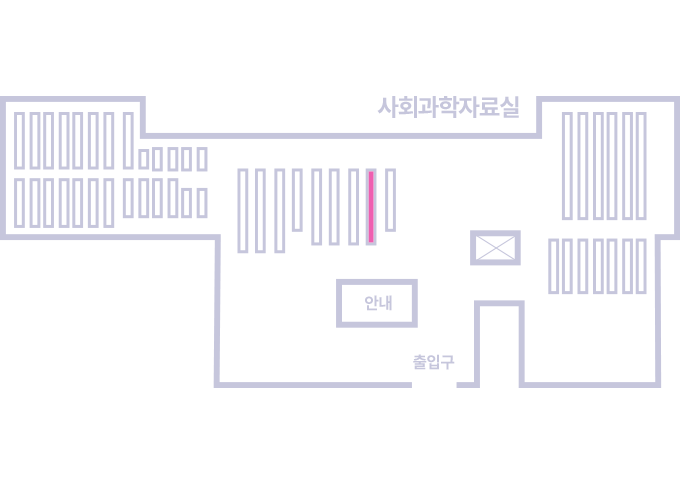권호기사보기
| 기사명 | 저자명 | 페이지 | 원문 | 기사목차 |
|---|
| 대표형(전거형, Authority) | 생물정보 | 이형(異形, Variant) | 소속 | 직위 | 직업 | 활동분야 | 주기 | 서지 | |
|---|---|---|---|---|---|---|---|---|---|
| 연구/단체명을 입력해주세요. | |||||||||
|
|
|
|
|
|
* 주제를 선택하시면 검색 상세로 이동합니다.
Title Page
ABSTRACT
Contents
List of Abbreviations 12
Chapter 1. General Introduction 15
1.1. Universal Biomedical Market for Wound Management 15
1.1.1. Importance and Diversity of Wound Management Biomaterials 17
1.1.2. The Wound Healing Process 20
1.2. Bioactive Hydrogels 23
1.2.1. Immunomodulatory Biomaterials for Wound Healing 25
1.2.2. Current Strategies of Immunomodulatory Biomaterials 28
1.3. Inorganic Ion-based Biomaterials 31
1.3.1. Inorganic Ions for Immune Modulation 33
1.3.2. Zinc Ion (Zn²⁺) for Immune Modulation 35
1.3.3. Zn²⁺-releasing Hydrogels Immunomodulatory Mechanism 38
1.4. Research Motivation and Approaches 40
Chapter 2. Zn²⁺-releasing Immunomodulatory Hydrogels 42
2.1. Introduction 42
2.2. Experimental Section 44
2.2.1. Materials 44
2.2.2. Synthesis and Characterization of GtnSH and GtnMI Polymer 45
2.2.3. Preparation of Zn²⁺-releasing Hydrogels and Phase Transition Time 47
2.2.4. Rheological Analysis of Zn²⁺-releasing Hydrogels 49
2.2.5. Releasing Kinetics of Zn²⁺ and H₂O₂ 49
2.2.6. Cytocompatibility of Zn²⁺-releasing Hydrogels 50
2.2.7. In Vivo Subcutaneous Implantation 50
2.2.8. In Vivo Gene Expression Test 51
2.2.9. In Vivo Wound Healing 54
2.2.10. Histological Analysis and Immunofluorescence Staining 54
2.2.11. Statistical Analysis 55
2.3. Results and Discussion 56
2.3.1. Fabrication and Characterization of Zn²⁺-releasing Hydrogels 56
2.3.2. Release Kinetics of Zn²⁺ and H₂O₂ 60
2.3.3. Cyto-, Tissue Compatibility of Hydrogels 63
2.3.4. In Vivo Macrophage Recruitment and M2 Polarization Effect 65
2.3.5. In Vivo Cell Proliferation and Angiogenesis Effect 68
2.3.6. In Vivo Wound Healing (Critical Skin Defect Model) 70
Chapter 3. Conclusion and Future Direction 73
References 74
국문초록 92
Fig. 1.1. Global wound care market overview with Ref. 16
Fig. 1.2. Schematic representation of wound management materials. Redesigned with permission from [14, 15]. Copyright (2022) Elsevier. 18
Fig. 1.3. Schematic of wound healing process in skin. (a) Hemostasis. (b) Inflammation. (c) Proliferation. (d) Remodeling. Redesigned with permission from [23, 24]. Copyright (2020) The... 22
Fig. 1.4. Schematic of bioactive hydrogels with synthetic and natural polymers. Redesigned with permission from [11]. Copyright (2021) Royal Society of Chemistry. Redesigned with permission... 24
Fig. 1.5. Design strategy for immunomodulatory biomaterials to overcome implant rejection. Functional and phenotypic regulation of macrophages. Redesigned with permission from [49].... 27
Fig. 1.6. Current strategy for immunomodulatory biomaterials to modulate macrophage phenotype with biophysical properties and biochemical properties. Redesigned with permission... 30
Fig. 1.7. Effects of various inorganic ion-based biomaterials that directly or indirectly affect cellular function. Redesigned with permission from [82]. Copyright (2020) American Chemical Society. 32
Fig. 1.8. Zinc for the development and function of the immune system, including both innate and adaptive immune cells. Redesigned with permission from [108]. Copy right (2017)... 37
Fig. 1.9. Schematic representation of our approach to design Zn²⁺-releasing hydrogels. The hydrogel network is formed through disulfide bonds via thiol-ene reaction and ZnO₂-mediated... 41
Fig. 2.1. Synthesis and characterization of Zn²⁺-releasing hydrogels. (a) Zn²⁺-releasing hydrogel scheme, digital images of the sol-gel phase transition. Phase transition time of hydrogel depending... 59
Fig. 2.2. Zn²⁺ and H₂O₂ releasing kinetics. (a) Zn²⁺ cumulative release profile, (b) release percent of feed amount depend on zinc peroxide concentration. (c) H₂O₂ cumulative release profile... 62
Fig. 2.3. Biocompatibility of the hydrogels. (a) Optical images and fluorescence microscopic images of HDFs cultured with hydrogels for 1 day (live cells in green; dead cells in red). (b) Cell... 64
Fig. 2.4. In vivo effect of anti-inflammatory macrophages to hydrogels. Representative immunofluorescence images and quantification analysis of macrophage in hydrogels on day 14... 67
Fig. 2.5. In vivo cell proliferation and angiogenic effect. Representative immunofluorescence images and quantification analysis of macrophage in hydrogels on day 14 after hydrogels... 69
Fig. 2.6. In vivo wound closing and collagen maturation. (a) Schematic representations of critical defect model (b) Representative digital images of wounds and (c) quantitative analysis of wound... 72
피부는 우리 몸의 가장 바깥에 위치하여 외부 환경과 직접적으로 접촉하기 때문에 인체에서 가장 취약한 조직입니다. 크고 작은 피부의 상처는 환자의 불편함, 통증, 위험 등 다양한 부정적인 경험을 동반합니다. 따라서 현대사회에서는 더 진보된 창상 치료용 생체재료에 대한 수요와 요구가 증가하고 있습니다.
하이드로젤은 친수성 고분자의 3차원 네트워크입니다. 최근에는 하이드로젤의 물리, 화학, 그리고 생물학적 자극을 통해 주변 조직을 자극하고 세포들과 상호작용하는 생체활성 하이드로젤이 주목받고 있습니다. 생체활성 하이드로젤은 내인성 치유 능력을 향상시켜 상처 치유를 향상시킬 수 있습니다. 특히 면역조절 하이드로젤은 다양한 면역세포의 활성과 기능을 조절해 염증단계를 조절합니다. 대표적으로 대식세포는 표현형 조절을 통해 전 염증 및 항 염증 미세환경을 제공하여 상처치유에 기여합니다.
무기이온 기반 생체활성 하이드로젤은 인체 내의 다양한 생물학적 기능을 조절하는 무기이온의 면역조절 특성을 활용하여 조직 재생을 향상시키기 위한 생체 재료입니다. 특히, 아연이온은 선천성 및 적응성 면역조절에 관여하며 면역조절 인자 발현을 통해 대식세포 유입 및 M2 대식세포 분극화에 효과적이며 상처치유 전반적인 과정에 기여합니다. 하지만 대식세포 행동을 조절하는 아연이온의 면역조절 기작은 아직 명확하게 밝혀지지 않았습니다. 따라서 아연이온 기반의 생체재료를 제작함에 있어 면역조절 기작을 이해하는 것은 중요합니다.
본 연구에서는 티올-엔 가교 반응과 과산화아연 매개 가교 반응을 통해 아연이온 방출 면역조절 하이드로젤을 개발하였습니다. 하이드로젤은 상전이 시간 및 기계적 강도를 포함하여 조절 가능한 물리화학적 특성을 가집니다. 우리 하이드로젤은 장기간 지속적으로 아연이온을 방출하여 장기간 아연 이온이 풍부한 미세환경을 제공할 수 있습니다. 또한, 우리 하이드로젤은 상처 치유 생체재료로서 우수한 세포적합성과 조직적합성을 보여주었습니다. 흥미롭게도, 하이드로젤에서 방출된 아연이온은 면역조절 인자(CCL2/MCP-1, A20/TNFAIP3 및 IL-13)의 발현을 통해 대식세포 유입 및 M2 표현형 대식세포 분극화를 나타냈습니다. 항 염증 미세환경을 제공하는 M2 대식세포는 면역조절뿐만 아니라 세포증식, 혈관 신생, 콜라겐 성숙 등 상처치유 전반적인 과정에 기여할 수 있습니다. 결론적으로, 우리의 아연이온 방출 면역조절 하이드로젤이 상처치유 및 조직 재생을 위한 진보된 면역조절 생체재료로서 큰 잠재력을 가지고 있다고 제안합니다.*표시는 필수 입력사항입니다.
| 전화번호 |
|---|
| 기사명 | 저자명 | 페이지 | 원문 | 기사목차 |
|---|
| 번호 | 발행일자 | 권호명 | 제본정보 | 자료실 | 원문 | 신청 페이지 |
|---|
도서위치안내: / 서가번호:

우편복사 목록담기를 완료하였습니다.
*표시는 필수 입력사항입니다.
저장 되었습니다.